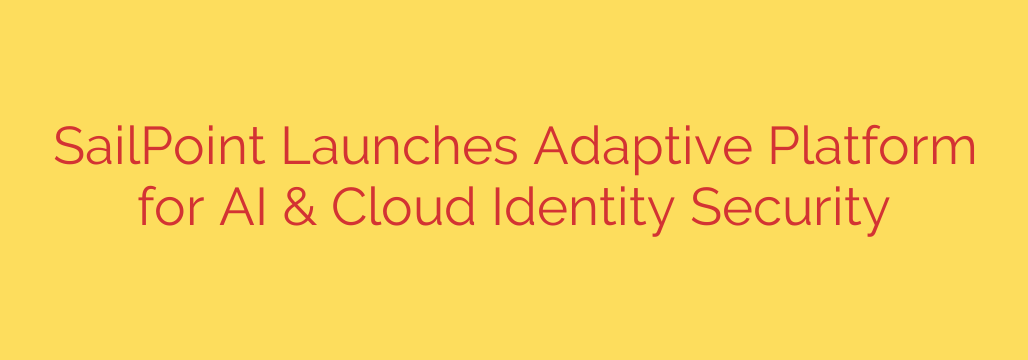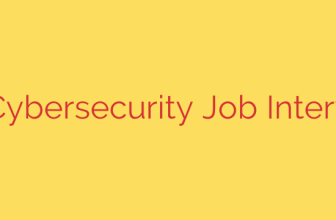
Navigating the New Era of Identity Security: How AI is Redefining Access Management
In today’s complex digital landscape, managing who has access to what has become a monumental challenge. With the explosion of cloud applications, remote workforces, and countless non-human identities like APIs and service accounts, traditional security models are struggling to keep up. The modern enterprise operates in a borderless environment, and securing it requires a more intelligent, dynamic approach.
A new generation of identity security is emerging, one that is built on the principles of artificial intelligence and adaptability. This shift marks a critical evolution from static, rule-based systems to a more proactive and context-aware security posture.
The Growing Complexity of Enterprise Identity
The core problem is one of scale and complexity. Organizations now manage a diverse ecosystem of identities, each with unique access needs and risk profiles:
- Human Identities: Employees, contractors, partners, and customers.
- SaaS Identities: Thousands of users across hundreds of applications like Salesforce, Microsoft 365, and Workday.
- Cloud Infrastructure Identities: Access to critical resources in AWS, Azure, and Google Cloud.
- Non-Human and Machine Identities: Service accounts, APIs, and bots that now outnumber human users and represent a significant attack vector.
Manually governing this web of permissions is no longer feasible. It’s slow, prone to error, and creates security gaps that attackers are eager to exploit. This is where an adaptive, AI-powered approach becomes essential.
A Leap Forward: The Rise of Adaptive Identity Platforms
The future of identity security lies in platforms that can learn, adapt, and make intelligent decisions in real-time. A groundbreaking new architecture, often referred to as an “adaptive identity security platform,” is designed to provide this level of intelligence. One leading example is the recently unveiled SailPoint Atlas platform, which serves as a foundational technology for modern identity governance.
Unlike legacy systems that rely on periodic checks and manual reviews, an adaptive platform offers:
- Continuous Monitoring: It constantly analyzes access patterns and user behavior across all applications and infrastructure.
- Contextual Awareness: It understands the context behind an access request—who the user is, their role, the data they are accessing, and from where—to determine risk.
- Proactive Threat Detection: It uses machine learning to identify anomalous behavior and potential threats before they escalate into a full-blown breach.
The goal is to move beyond simply granting access and instead continuously ensure that the right entities have the right access, for the right reasons, at all times.
Core Capabilities of an AI-Powered Identity Engine
An advanced identity security framework is built on several key pillars that work together to create a robust defense system.
Unified Visibility and Control: The first step to securing anything is to see it. These platforms provide a centralized view of all identities—human and non-human—and their access rights across the entire digital ecosystem. This eliminates blind spots and provides a single source of truth for governance.
AI-Driven Insights and Recommendations: This is the game-changing element. AI algorithms analyze vast amounts of identity data to uncover hidden risks, such as dormant accounts, excessive permissions, or toxic combinations of access. The system can then recommend specific actions, like revoking unnecessary access or flagging a user for review, empowering security teams to act decisively.
Automated Access Management: Automation is key to managing identity at scale. An intelligent platform can automate the entire identity lifecycle, from onboarding a new employee and granting initial access to modifying permissions during a role change and securely de-provisioning access upon departure.
Extensible and Open Architecture: No security tool operates in a vacuum. A modern identity platform must integrate seamlessly with the broader security stack, including SIEM, SOAR, and cloud security tools. This creates a cohesive defense strategy where identity insights can inform and enrich other security operations.
Actionable Security Tips for Your Organization
Strengthening your identity security posture is a critical step in protecting your organization from modern threats. Here are a few practical steps you can take:
- Conduct a Comprehensive Identity Audit: Start by mapping out all user and machine identities and their current access permissions. You can’t protect what you don’t know exists.
- Enforce the Principle of Least Privilege: Ensure that every identity only has the absolute minimum level of access required to perform its function. Regularly review and revoke any unnecessary permissions.
- Integrate Identity into Your Security Operations: Connect your identity platform with your Security Operations Center (SOC) tools. This allows for faster detection and response when identity-related threats are detected.
- Prioritize Securing Non-Human Identities: Pay special attention to service accounts, API keys, and other machine identities. These are often overlooked and can provide attackers with powerful, privileged access to your systems.
Ultimately, the cybersecurity landscape demands a more intelligent and forward-thinking approach. By embracing AI-driven, adaptive platforms, organizations can move from a reactive to a proactive security model, ensuring they are prepared to defend against the sophisticated identity-based attacks of today and tomorrow.
Source: https://datacenternews.asia/story/sailpoint-unveils-adaptive-platform-to-secure-ai-cloud-identities








